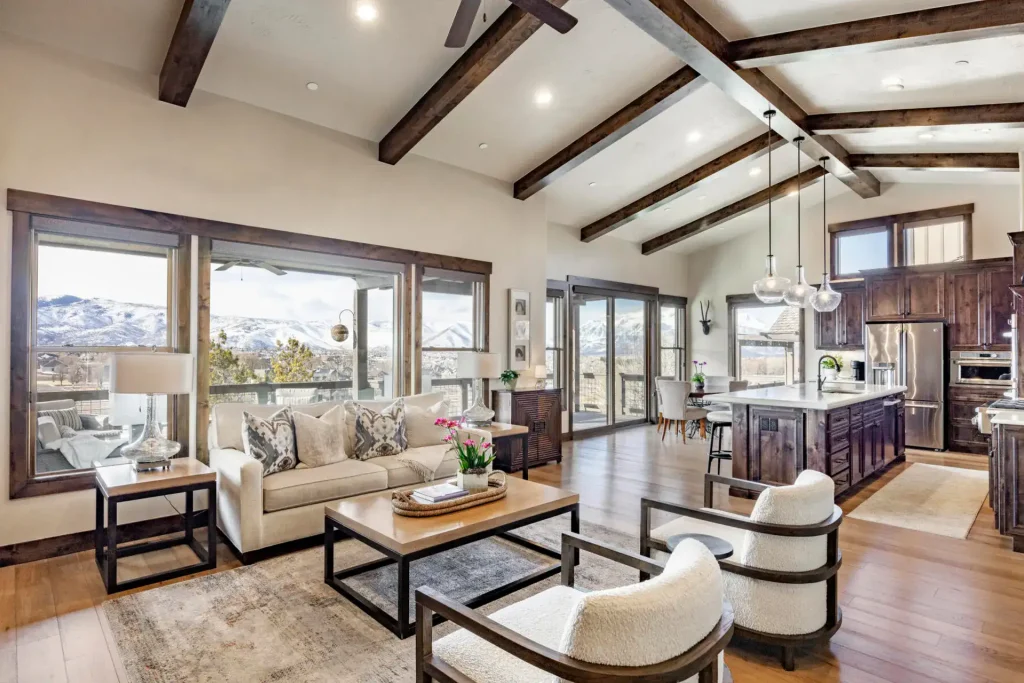Utah, with its breathtaking landscapes, booming economy, and growing urban centers, has become one of the fastest-growing states in the country. From the Greatest Snow on Earth and picturesque red rock formations to world-class ski resorts and The Mighty Five, it’s no wonder why so many people are moving here.
And though our state has much to offer long-time residents and newcomers alike, it’s important to have a big-picture understanding of the cost of living in Utah if you’re considering moving to the Beehive State.
Is Utah expensive to live in?
There are many factors that play into the cost of living – and just as many different statistics and state-by-state rankings for everything from housing costs to recreational expenditures. According to the 2021 data from the Bureau of Economic Analysis, however, the average personal cost of living in Utah is $42,653 annually – approximately half of Utah’s median household income ($86,833).
Grocery and healthcare expenses in Utah align closely with national averages, and Utah boasts some of the lowest utility costs in the nation, averaging $345.62 per household per month.

Housing Costs in Utah
One of the biggest factors that impacts the overall cost of living is housing, which can vary dramatically in Utah depending on the area. For example (as of March 2024):
- Salt Lake City’s median home price has topped $551,000 while median rents are $1,595.
- In Park City, the median home price soared to over $2.1 million with median rents around $3,400.
- St. George in southwestern Utah has a median home price of around $507,000.
- Ogden’s median home price is around $361,000.
- Provo’s median home was priced at roughly $437,000.
Utah’s housing market has seen rapid price appreciation over the past decade amid strong domestic in-migration combined with relatively limited new home construction, especially along the booming Wasatch Front. However, prices remain far lower than in markets like Los Angeles, San Francisco, Seattle, or New York.
Even in affluent areas like Park City, housing costs are relatively affordable compared to ultra-expensive ski town markets like Aspen or Jackson Hole. One thing many people don’t know: the cost to buy and sell property in Summit County, Utah, is very low compared to many other places.
Utah Property Tax
Utah’s property taxes rank 6th lowest in the nation at 0.55%. If you are a primary resident, your property tax rate is 0.55% of the assessed value – this is also the case for full-time rentals. Second homes and vacation rentals are taxed at 1% of the assessed value.
Additionally, Utah provides further exemptions and has a relatively straightforward process for appealing property values to lower the taxable amount. This favorable tax environment helps make homeownership more accessible and affordable for Utah residents, particularly in comparison to states with higher property tax burdens.
Utah State Income Tax
Over the past two years, our lawmakers have slashed the Utah state income tax rate from 4.85% to 4.55%. While these rates may appear slightly higher than those in states like Texas or Florida, it’s much lower than the American average of 8.9%. Plus, Utah compensates for a slightly higher rate than some states with our relatively lower property tax rates, ensuring a balanced tax burden for residents.
Utah Sales Tax
Utah’s sales tax system starts with a base rate of 4.85%. However, local jurisdictions can levy additional sales taxes, resulting in an average combined rate of approximately 6.68%. For example, Salt Lake County imposes a total sales tax rate of 6.85%, while Utah County’s rate totals 6.75%. Park City tops the combined sales and use tax rate at 9.05% but also offers a higher standard of living than many Utah localities. These variations underscore the importance of accounting for local taxes when budgeting expenses.
Outdoor Recreation Costs
Our proximity to incredible outdoor recreational opportunities is one of the biggest reasons people move here – meaning we’d be remiss not to talk about recreational costs. While Utah provides plenty of opportunities for free outdoor recreation in its abundance of national and state parks and public lands, many residents also pay for seasonal passes, memberships, and equipment to access ski resorts, golf courses, and other recreational facilities.
For example, season passes at top ski areas can easily exceed $1,000 per person. At Deer Valley, an adult season pass costs $3,180 while Alta’s pass is $1,379 for the 2024-25 season. Many locals also pay for equipment, storage lockers, lessons, and even slopeside lodging to maximize their ski days.
Utah is also home to more than 150 golf courses spanning private clubs, public municipal courses, and world-class resort-based clubs. Playing 18 holes at a resort course can cost $100+ in peak season, but Utah residents can offset some of these costs by purchasing state park passes, city recreation passes, or joining private club memberships.
Utah is the ultimate playground – but playing requires investment. In addition to skiing and golf, hiking, camping, fishing, boating, and off-roading are immensely popular in Utah. The costs for gear, vehicles, licenses, and fees to partake in these sports can add up but are well worth the expense.
Utah offers a compelling proposition for residents seeking a balance between affordability and quality of life. While certain areas like Park City may entail higher living expenses, the state presents an attractive landscape for individuals and families looking to thrive without bearing the financial strains associated with coastal regions. Ultimately, informed decision-making and thorough research remain imperative for navigating Utah’s diverse and dynamic cities, towns, and neighborhoods.